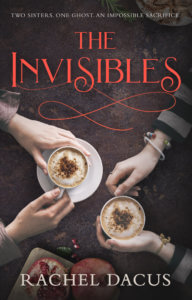 If you’re considering “going indie” (self-publishing), consider the category of your fiction. Publishing categories matter in the success of self-published books.
If you’re considering “going indie” (self-publishing), consider the category of your fiction. Publishing categories matter in the success of self-published books.Here’s author and editor Jane Friedman on deciding if you have the right stuff to be a self-publisher: Jane on how to make the decision. She’s so practical. That really helps with such a big emotional decision. But one thing most people talking about self-publishing don’t discuss is how to do it with mainstream fiction (including women’s fiction). Because most successful self-publishers write genre fiction. And they don’t expect to find their books on bookstore shelves.
Self-Publishing Mainstream or Women’s Fiction
The most successful self-published novels are genre stories — romance, thriller, mystery, fantasy, science fiction (pretty much in that order in terms of book sales). If you’re writing a women’s fiction or a commercial fiction novel, choosing to publish it yourself is taking a risk. And there isn’t much written on this topic, because most writers of these mainstream categories choose the traditional publishing route.
That said, my bestselling book is self-published women’s fiction with magical realism and romantic elements. The Invisibles consistently makes money from my advertising it. It’s the story of two half-sisters in a dispute over claiming their inherited cottage in Italy, which happens to be haunted by the ghost of the Romantic Era poet Shelley.
The novel breaks the rules for what you should self-publish: it isn’t part of a series, it doesn’t fit into a genre (see above), and it performs best aimed at a broad audience of readers who like traditionally published women’s fiction (JoJo Moyes, Kristin Hannah, Elin Hilderbrand). It is a little offbeat: it isn’t set in the U.S. or within a traditional family. My best guess as to its success (beyond that it’s a good story with good characters) is that I scored a terrific cover. In promoting your book on Amazon, covers at 50% or more of sales. Buyers are restless and will often click away unless cover or first line grabs them.

Are You an Indie at Heart?
As for me, I’m an Indie at heart. I like having control of my work and conceiving of book cover concepts (though I ‘m not an artist and hire a professional to do the actual design). I like marketing my stuff, having a background in fundraising and public relations. Writing ads and developing ad graphics (thankyou, Book Brush, for making graphics easy). I love playing on social media and establishing myself as an author this way. Blogging is what I do to relax, ditto Twitter and Facebook.
I had a bad experience with a small press that was slowly disintegrating just as they published my first novel, The Renaissance Club. After choosing between letting that book drift off into the vapor or self-publishing, I chose my indie lane.
 This is the Ligurian Coast of Italy — the location of The Invisibles. I was living there imaginatively during one memorable National Novel Writing Month while drafting this story. At the same time, I was dealing with self-publishing my first novel, The Renaissance Club. This is the fate of the Indie author — juggling many balls while creating new ones to toss up there into the mix.
This is the Ligurian Coast of Italy — the location of The Invisibles. I was living there imaginatively during one memorable National Novel Writing Month while drafting this story. At the same time, I was dealing with self-publishing my first novel, The Renaissance Club. This is the fate of the Indie author — juggling many balls while creating new ones to toss up there into the mix.
For indies, nothing is easy, and everything takes precious time, but if you love being in control of your publishing process, you’re an indie at heart.
There are so many good reasons to go Indie — a big one being the luxurious feeling of control. The downside is that you must embrace marketing, social media, and advertising. And that involves masses of learning. I love to learn, and I love writing creatively about my books — creativity is the essence of writing ad copy.
My favorite authors on the topic of promoting your self-published books are David Gaughran and Mark Dawson.
Here’s a good article on budgeting for self-publishing.
If you don’t relish these things, becoming an indie author of mainstream fiction might work better for you by seeking out a hybrid publisher. That’s a publisher who is selective and can provide some or all of a promotion package. You enter into a partnership with them, venturing some capital. But it costs to hire these services as a self-publisher too. Depending on the hybrid press you choose, costs might be comparable.
More on hybrid publishing in an other blog.